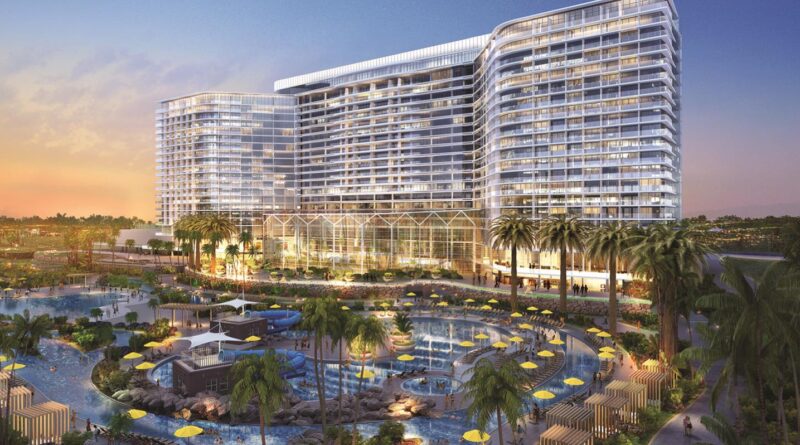History of Chula Vista California
Long before European explorers arrived, the area now known as Chula Vista was home to the Kumeyaay people. These indigenous inhabitants had established a deep connection with the land, thriving in the region for thousands of years. The Kumeyaay lived in small, semi-nomadic groups, utilizing the abundant natural resources of the area. They practiced a subsistence lifestyle, relying on hunting, gathering, and fishing, particularly around the Sweetwater River and the coastal regions.
The Kumeyaay had a profound understanding of the local environment, from the diverse plant life to the seasonal patterns of animal migration. This knowledge allowed them to adapt to the area’s semi-arid climate, making the most of the region’s resources. Their culture and traditions were closely tied to the land, with spiritual practices that emphasized harmony with nature.
Spanish Exploration and the Mission Era
The arrival of Spanish explorers in the late 18th century marked the beginning of a significant transformation for the region. In 1769, Gaspar de Portolá’s expedition passed through the area, leading to the establishment of the first Spanish missions in California. The nearby Mission San Diego de Alcalá, founded by Father Junípero Serra, became a focal point for the spread of Spanish influence.
During the Mission Era, the land that would become Chula Vista was part of a vast territory controlled by the missions. The Spanish sought to convert the indigenous population to Christianity, imposing European agricultural practices and lifestyle changes on the Kumeyaay. This period was marked by significant cultural upheaval, as the traditional ways of life for the Kumeyaay were disrupted by the mission system.
The introduction of European crops, livestock, and architecture began to reshape the landscape of the region. However, the harsh realities of mission life, including forced labor and disease, had devastating effects on the Kumeyaay population, leading to a dramatic decline in their numbers.
Mexican Rule and Rancho de la Nación
After Mexico gained independence from Spain in 1821, California, including the area now known as Chula Vista, came under Mexican rule. This period saw the secularization of the missions and the distribution of mission lands through land grants to Mexican citizens. The land that would become Chula Vista was part of Rancho de la Nación, a vast land grant awarded to John (Don Juan) Forster, an Englishman who had become a Mexican citizen.
Rancho de la Nación was primarily used for cattle ranching, with vast herds grazing across the open plains. The ranchos operated as self-sufficient communities, with a few scattered adobe buildings serving as the center of operations. This era saw the rise of a unique Californio culture, blending Spanish and Mexican traditions with the realities of frontier life.
The rancho system, however, was short-lived. As California’s political landscape shifted, the rancho economy began to decline, and the large land holdings were eventually broken up.
The Transition to American Control
The Mexican-American War (1846-1848) marked another turning point in the history of Chula Vista. With the Treaty of Guadalupe Hidalgo in 1848, California was ceded to the United States, and the region entered a new phase of development under American control.
The discovery of gold in Northern California in 1848 led to a massive influx of settlers, dramatically increasing the population of the region. The Gold Rush spurred economic growth and infrastructure development, as well as a demand for land. The American government began to formalize land ownership through the Land Act of 1851, leading to legal battles over land claims, including those of Rancho de la Nación.
During this period, the land that would become Chula Vista began to see more organized development, with speculators and settlers moving into the area. However, it would be several more decades before Chula Vista would emerge as a distinct community.
The Birth of Chula Vista
Chula Vista’s formal establishment as a city began in the late 19th century, driven by the vision of the Santa Fe Railway Company. In the 1880s, the railway extended into the region, opening up new opportunities for agriculture and settlement. Recognizing the potential of the fertile land, the San Diego Land and Town Company, a subsidiary of the railway, began promoting the area as an ideal place for farming and living.
The company’s vision was to create a “Beautiful View,” which is the English translation of “Chula Vista.” They laid out the first streets, planted eucalyptus trees, and encouraged the cultivation of citrus groves. The region’s climate, with its mild winters and sunny days, proved perfect for growing lemons, and Chula Vista soon became known as the “Lemon Capital of the World.”
Agricultural Prosperity and Growth
The early 20th century was a period of significant growth for Chula Vista, largely due to its thriving agricultural industry. The lemon orchards expanded rapidly, and by the 1910s, the city was a major producer of lemons, contributing to California’s dominance in the citrus market. The city’s agricultural success attracted more settlers, leading to the development of residential neighborhoods and community infrastructure.
Chula Vista’s agricultural economy was supported by advances in irrigation, which allowed for more efficient water use in the semi-arid region. The completion of the Sweetwater Dam in 1888 provided a reliable water source, further boosting agricultural productivity. The dam also played a crucial role in supporting the growing population by ensuring a steady water supply for both farming and domestic use.
As the population grew, so did the city’s civic institutions. Schools, churches, and community organizations began to take root, fostering a sense of community among the residents.
Chula Vista During World War II
The outbreak of World War II brought significant changes to Chula Vista, transforming the city from a quiet agricultural community into a bustling center of wartime production. The Rohr Aircraft Corporation established a major manufacturing plant in Chula Vista in 1940, producing aircraft parts and components for the U.S. military. This development brought thousands of new residents to the city, many of whom were workers employed at the plant.
The rapid influx of workers and their families led to a housing boom, with new neighborhoods and infrastructure quickly constructed to accommodate the growing population. The war effort also spurred the development of other industries in the area, contributing to Chula Vista’s economic diversification.
The city’s involvement in the war effort left a lasting legacy, as many of the wartime workers chose to stay in Chula Vista after the war ended. This period marked the beginning of Chula Vista’s transformation from an agricultural hub to a suburban city with a diverse economy.
Post-War Suburbanization and Population Boom
The post-war years brought unprecedented growth to Chula Vista as it evolved into a suburban community. The city’s proximity to San Diego made it an attractive location for returning veterans and their families, leading to a housing boom that reshaped the landscape. The 1950s and 1960s saw the development of new residential neighborhoods, shopping centers, and schools to accommodate the rapidly growing population.
Chula Vista’s suburban growth was part of a broader trend across the United States, as millions of Americans moved to the suburbs in search of affordable housing and a higher quality of life. The construction of Interstate 5 and other transportation improvements made commuting to San Diego easier, further fueling the city’s growth.
During this period, Chula Vista’s economy diversified beyond agriculture and manufacturing. The city’s growing population supported the development of retail, education, and healthcare sectors, laying the foundation for the modern economy.
Cultural and Economic Shifts in the Late 20th Century
The latter half of the 20th century was a period of significant cultural and economic change for Chula Vista. As the city’s population continued to grow, so did its diversity. New waves of immigrants from Mexico and other Latin American countries brought cultural richness to the city, influencing everything from food and festivals to language and community life.
The city also saw shifts in its economic base, with the decline of agriculture and the rise of new industries. The closure of the Rohr Aircraft plant in the late 1980s marked the end of an era, but Chula Vista adapted by attracting new businesses and investment. The city began to focus on developing its tourism and service industries, capitalizing on its location near the Mexican border and its natural attractions.
During this time, Chula Vista also invested in public infrastructure, including parks, libraries, and cultural centers, enhancing the quality of life for its residents. The establishment of the Chula Vista Nature Center (now the Living Coast Discovery Center) in 1987 highlighted the city’s commitment to environmental education and conservation.
The Emergence of Eastlake and New Communities
In the late 20th and early 21st centuries, Chula Vista experienced a new wave of development with the emergence of Eastlake and other master-planned communities in the eastern part of the city. These developments were designed to offer a high quality of life, with amenities such as parks, schools, shopping centers, and recreational facilities integrated into the neighborhoods.
Eastlake quickly became one of Chula Vista’s most desirable areas, attracting families and professionals looking for a suburban lifestyle within reach of urban conveniences. The success of Eastlake spurred further development in eastern Chula Vista, leading to the creation of other planned communities such as Otay Ranch and Rolling Hills Ranch.
These new developments significantly increased Chula Vista’s population and contributed to its economic growth. They also reshaped the city’s demographics, bringing in a younger, more affluent population.
Chula Vista’s Modern Economy and Growth
In recent decades, Chula Vista has continued to grow and evolve, emerging as a major city within the San Diego metropolitan area. The city’s economy has diversified, with growth in sectors such as healthcare, education, retail, and technology. The establishment of the Chula Vista Bayfront project, a large-scale redevelopment of the city’s waterfront, is expected to further boost the local economy by attracting tourism, business, and investment.
Chula Vista has also become a hub for education and research, with institutions such as Southwestern College and the Chula Vista Elite Athlete Training Center (formerly the Olympic Training Center) contributing to the city’s reputation as a center for learning and athletic excellence.
The city’s growth has been accompanied by efforts to balance development with environmental sustainability. Chula Vista has implemented green building standards, invested in renewable energy, and preserved open spaces to ensure that growth does not come at the expense of the environment.
Community and Cultural Life in the 21st Century
Today, Chula Vista is a vibrant, diverse community with a rich cultural life. The city hosts a variety of cultural events and festivals throughout the year, celebrating its heritage and the diverse backgrounds of its residents. The annual Lemon Festival, celebrating the city’s agricultural past, is one of the most popular events, drawing visitors from across the region.
Chula Vista’s cultural institutions, such as the OnStage Playhouse and the Chula Vista Heritage Museum, play a vital role in preserving and promoting the city’s history and arts. The city’s parks and recreational facilities provide residents with opportunities for outdoor activities, while the Chula Vista Public Library system offers educational resources and programs for all ages.
The city’s commitment to community engagement and inclusivity is reflected in its efforts to provide services and opportunities for all residents, regardless of background or economic status. This focus on community well-being has helped make Chula Vista one of the most livable cities in California.
The Future of Chula Vista
As Chula Vista looks to the future, the city continues to embrace growth and change while honoring its rich history. With ongoing developments such as the Chula Vista Bayfront and the expansion of eastern communities, the city is poised for continued economic and population growth. At the same time, Chula Vista remains committed to sustainability, community engagement, and cultural preservation.
The city’s strategic location, diverse economy, and strong sense of community make it well-positioned to thrive in the coming decades. As Chula Vista continues to grow, it will undoubtedly build on its history, creating new opportunities and preserving its unique character for future generations.
Discover more from City Towner
Subscribe to get the latest posts sent to your email.




